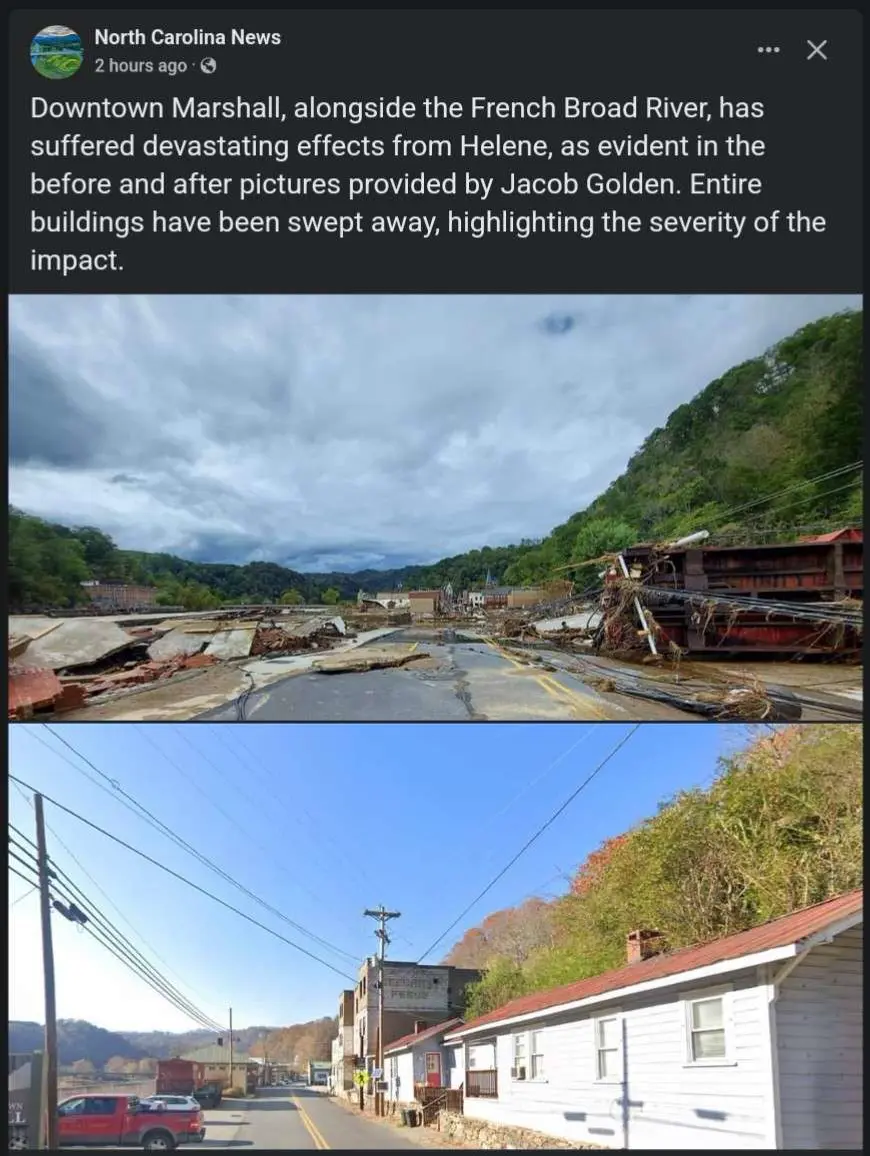AgoristView on Nostr: More carnage 😢 ...
More carnage 😢


quoting nevent1q…3cfwEastern TN, Western NC, upstate SC are rekt. Hundreds of roads in Western NC simply no longer exist.
The state and federal response has been ongoing, with over 1,000 personnel, including National Guard assets, deployed according to FEMA. A disaster declaration for NC has been made but crews cannot traverse over collapsed bridges and 100+ foot ravines.
Main interstates I-40 and I-26 have collapsed sections. Numerous state roads have washed away.
Many secondary roads into neighborhoods are effectively eviscerated for miles. Survivors can't get out, help can't get in.
It's hard to get into Asheville. A 30 minute drive take 8-12 hours with many roads not existing, the remaining gas stations swamped. To get into smaller towns in the mountains is a day's journey if possible at all. National Guard trucks with food and water have to stop at collapses.
Similar to Hurricane Katrina, where boats and helicopters were the only viable means of aid delivery in the first days, air support is currently the most effective way to connect Western NC to the outside world. There are a limited amount of helicopters operating. Although the water has receded, the roads are still impassable.
This is still very much an active search and rescue mission. There is a high number of missing (in the thousands per state media) because people can't get in touch with loved ones. We saw this after Hurricane Ian as well, and expect that number will drop significantly when phone service/internet returns. For death toll and recovery, the final number will likely not be known for at least a month.
The lack of media presence on the ground isn't for lack of trying - reporters can't get into many areas for the same reason rescue can't. Even if they could, communication systems are destroyed / offline.
This is not going to be a quick recovery for anyone. Some rural parts of Western NC may never be rebuilt.
